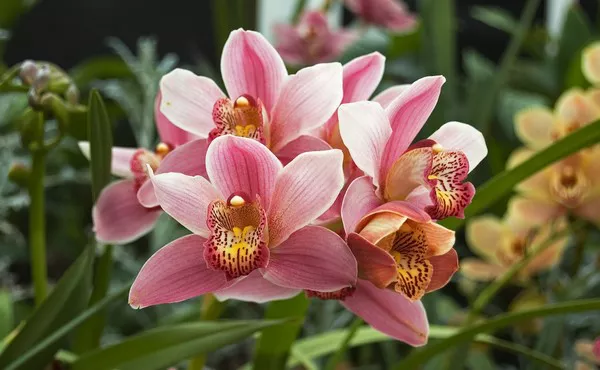Marigolds, belonging to the genus Tagetes, are a favorite among gardeners and flower enthusiasts for their vibrant colors and ease of cultivation. Among the various species and hybrids, the biggest marigold flower stands out for its remarkable size, striking appearance, and robust nature. This article delves into the fascinating world of the largest marigold flower, exploring its characteristics, habitat, distribution, cultivation, conservation status, and some intriguing facts.
The Biggest Marigold Flower: Tagetes erecta
The title of the biggest marigold flower is held by Tagetes erecta, commonly known as the African marigold or American marigold. This species is renowned for its large, showy blooms, which can reach up to 5 inches (12 centimeters) in diameter. Despite its common name, the African marigold is native to Mexico and Central America, but it has been widely cultivated and naturalized in many parts of the world.
See Also: The Biggest Amaryllis in the World – Amaryllis Belladonna!
Characteristics and Appearance
Tagetes erecta is an annual herbaceous plant that can grow up to 3 feet (90 centimeters) tall. The plant has a robust and upright growth habit, with sturdy stems that can support its large flowers. The leaves are pinnate, with lanceolate leaflets that are deeply cut and emit a distinctive, pungent aroma when crushed.
Flowers
The flowers of Tagetes erecta are the most striking feature. They come in shades of yellow, orange, and gold, with some varieties exhibiting bi-colored blooms. Each flower head is composed of numerous tightly packed petals, forming a dense, ball-like structure. The blooms are borne singly on long stalks, making them excellent for cutting and floral arrangements.
Size
The size of the flowers can vary depending on the cultivar and growing conditions. Under optimal conditions, the blooms can reach up to 5 inches (12 centimeters) in diameter, making them the largest among the marigold species. This impressive size, coupled with their vibrant colors, makes Tagetes erecta a favorite for ornamental gardening and decorative purposes.
Habitat and Distribution
Tagetes erecta is native to Mexico and Central America, where it thrives in the warm, sunny climate. It prefers well-drained soil with moderate fertility and can be found growing in a variety of habitats, from cultivated fields to roadside verges and disturbed sites. The plant has been widely introduced to other parts of the world, including North America, Europe, Asia, and Africa, where it is grown both as an ornamental plant and for its medicinal properties.
Climate
African marigolds prefer warm temperatures and are frost-sensitive. They thrive in USDA hardiness zones 2-11, which means they can be grown as annuals in most parts of the United States. In tropical and subtropical regions, they can be grown year-round.
Cultivation and Care
Cultivating Tagetes erecta is relatively straightforward, making it a popular choice for both novice and experienced gardeners. The following sections outline the key aspects of growing and caring for this impressive plant.
Planting
African marigolds can be grown from seeds or transplants. Seeds can be sown directly into the garden after the last frost date or started indoors 4-6 weeks before the last frost. The seeds should be sown in a well-drained seed-starting mix and kept moist until germination, which usually occurs within 5-10 days.
When transplanting seedlings, it is important to space them 12-18 inches (30-45 centimeters) apart to allow for adequate air circulation and growth. The plants prefer full sun but can tolerate partial shade, although flowering may be reduced.
Soil
Tagetes erecta thrives in well-drained soil with moderate fertility. The soil should be kept evenly moist but not waterlogged. Adding compost or organic matter to the soil can improve fertility and drainage, providing an ideal growing environment for the plants.
Watering
Regular watering is essential, especially during dry periods. However, overwatering can lead to root rot and other diseases, so it is important to allow the soil to dry out slightly between waterings. Mulching around the base of the plants can help retain soil moisture and reduce the need for frequent watering.
Fertilization
African marigolds benefit from regular feeding with a balanced, all-purpose fertilizer. Fertilizer should be applied according to the manufacturer’s instructions, typically every 4-6 weeks during the growing season. Avoid over-fertilizing, as this can lead to excessive foliage growth at the expense of flowers.
Pest and Disease Management
Tagetes erecta is relatively resistant to pests and diseases, but it can be susceptible to common garden problems such as aphids, spider mites, and powdery mildew. Regular inspection and prompt treatment with appropriate insecticides or fungicides can help keep these issues in check. Planting marigolds in well-drained soil and providing adequate spacing can also reduce the risk of disease.
Conservation Status and Threats
Tagetes erecta is not currently considered to be at risk of extinction and does not have a conservation status. However, like many plant species, it can be affected by environmental changes and habitat loss. The widespread cultivation of this species in gardens and farms around the world helps ensure its continued survival and availability.
Interesting Facts
Cultural Significance: In Mexico, Tagetes erecta is known as “cempasúchil” and is traditionally used in Day of the Dead (Día de los Muertos) celebrations. The bright orange and yellow flowers are believed to guide the spirits of the deceased back to their families.
Medicinal Uses: African marigolds have been used in traditional medicine for their anti-inflammatory and antimicrobial properties. Extracts from the flowers are used to treat skin conditions, digestive issues, and respiratory ailments.
Companion Planting: Marigolds are popular in companion planting due to their ability to repel certain pests. They are often planted alongside vegetables and other garden plants to deter nematodes, aphids, and other insects.
Edible Flowers: The petals of Tagetes erecta are edible and can be used as a natural food coloring or garnish in salads and dishes. They have a mild citrus flavor and add a vibrant touch to culinary creations.
Essential Oils: The flowers and leaves of Tagetes erecta are used to extract essential oils that are valued for their fragrance and therapeutic properties. These oils are used in aromatherapy, perfumes, and cosmetic products.
See Also: The Biggest White Hydrangea – ‘Annabelle’!
Conclusion
The African marigold, Tagetes erecta, stands out as the biggest marigold flower, captivating gardeners and flower enthusiasts with its impressive size, vibrant colors, and robust nature. Its ease of cultivation, resistance to pests, and diverse uses in traditional medicine and culinary arts further enhance its appeal. Whether grown for ornamental purposes, cultural significance, or practical benefits, Tagetes erecta continues to be a beloved and versatile plant in gardens and landscapes around the world.
You Might Be Interested In:



![10 Most Richest Cities in the United States [Revealed!]](https://www.validdownloads.com/wp-content/uploads/2023/12/Manjula-Pothos.webp)



















